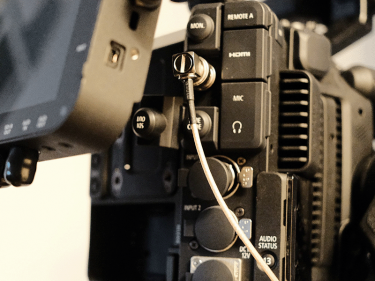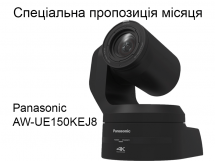| Óêðà¿íñüêà | English | |||||||||||
|
|||||||||||
| News | About company | Service-centre | OB Van/SNG Rental | NextGen Energy Solutions | Contact us |
|
|
Engineering Service, Inc.
» News News If you’re in a hurry, all you need to know is that you should ALWAYS plug in your camera/accessories power sources before connecting your BNC (SDI) cables, and then remove them before unplugging the power. If you don’t, you’ll run the risk of frying your SDI circuit. If you’d like to know why, keep reading. Otherwise, get back to shooting!
ARRI has learned of this vulnerability and posted a white paper about it, but I’ll distill it for you. This problem affects all cameras and all accessories with SDI I/O, but specifically with 6G or higher output. If you’re shooting a 4K+ camera, you’ve likely got a 6G or 12G signal coming out of there. For those who don’t know, the “G” number is just the bitrate. 3G is 3gbps, 6G is 6gbps, etc. It’s easier to shield 1.5G or 3G SDI than its higher-bitrate counterparts. Couldn’t tell ya why, but it doesn’t really matter from a practical standpoint anyway. Again, this problem applies to any camera and accessory, specifically with 6G or higher output. My Canon C500mkII has 12G SDI due to the 6K signal, the ARRI LF has a 6G circuit, the RED Monstro apparently only has 3G outputs which is odd but our friend the Sony VENICE goes up to 12G as well. Monitor/Recorders like my Odyssey 7Q+ or newer products like the Atomos Shogun 4K or something like a PIX E5 are ubiquitous on set, and their 6G circuits are just as vulnerable. This affects all of us. This issue can be mitigated. In ARRI’s words: “To prevent this damage to the SDI outputs, ALWAYS make sure to plug in the power cable first and THEN connect the BNC cable. Once power and BNC cables are connected, it is OK to power the camera or accessory on or off. Also, ALWAYS make sure to disconnect the BNC cable first and THEN disconnect the power cable. We also recommend using ONLY shielded power cables to power accessories that connect to the camera with a BNC cable. When only the plus pin connects on a shielded power cable, the shield will act as the power return and therefore not damage the SDI output. In addition, it is helpful to use only the highest quality of BNC cables” They also suggest against using D-Tap power, which is likely a bigger issue for people than ARRI seems to realize, not that they can change anything. D-Tap is used to power so many accessories (and even cameras, like I often use it for) that not using them can almost render certain workflows or accessories useless. Luckily, by following the POWER, THEN BNC protocol you’ll be fine. Just disconnect the cables in the opposite order when you’re done (BNC, then Power). Also, be sure your BNC cables aren’t damaged. What we’re avoiding here is the possibility of the + terminal of your power source connecting before the – one and having your BNC cable complete the circuit instead, which will burn up the SDI circuit as SDI wasn’t built to handle high currents like that. With D-Tap you can even plug the thing in backwards and that’d virtually guarantee you blow something up, SDI or not. Knowing that, you can intuitively think “Okay well, everything’s powered up, there’s no chance of me frying something by plugging in my monitor/recorder”. Works the same the other way, “Okay, I’ve unplugged all of my SDI cables, there’s no way to fry something by hastily unplugging my power cables”. So, while this isn’t a “new” problem it was recently discovered and as it affects everyone who uses SDI (so, most of us) I figured it was worth boosting as best I could. I’m sure you’ve been fine so far, so there’s no reason to suddenly panic, but I’ve heard a few folks not knowing what happened to the SDI on their cameras, and this was the cause. Just know there are best practices to follow to ensure you don’t fry something expensive. « To the list of news |
|
|||||||||||||||||
 |
+38 (044) 593-18-20 +38 (073) 593-18-20 +38 (096) 532-96-82 +38 (095) 532-96-82 Service center Telegram @Engineer_Service |

|
|
|||||
 |
e-mail: engineer-service.tv 15 Vavylovykh str., Kiev, 04060, Ukraine Authorized service centre of Panasonic, Sony, JVC, Fujinon, Canon |
|||||||







